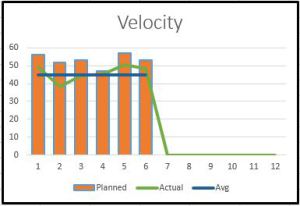Scrum by definition and design is meant to provide an alternative project management framework to traditional waterfall method. As one of the most used Agile methods, scrum is non prescriptive and focusing on fostering team collaborative effort to achieve short term objectives following a relentless steady rhythmic work style.
Sprint after sprint team keeps shoving User Stories from the backlog to the development mill rotated by the collective effort of the team.
However, in the rush to finish the current tasks, quality can be easily overlooked and irreversible technical dept may accumulate unless consistently and actively monitored and controlled using a defined process as I suggest here.
Again, four and three, four meetings types and three artifacts are the only rituals and work-products the Scrum Guide offers!
In practice, it is necessary to build on the framework offered by Scrum in order to avoid low quality deliverables that may occur by the…
View original post 383 more words

